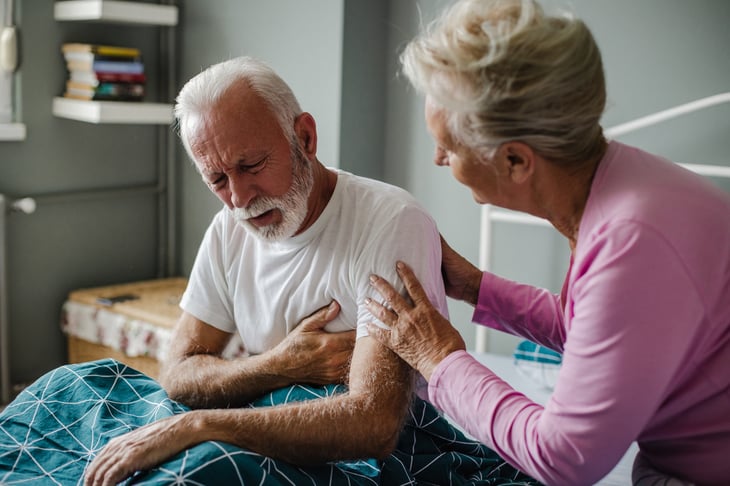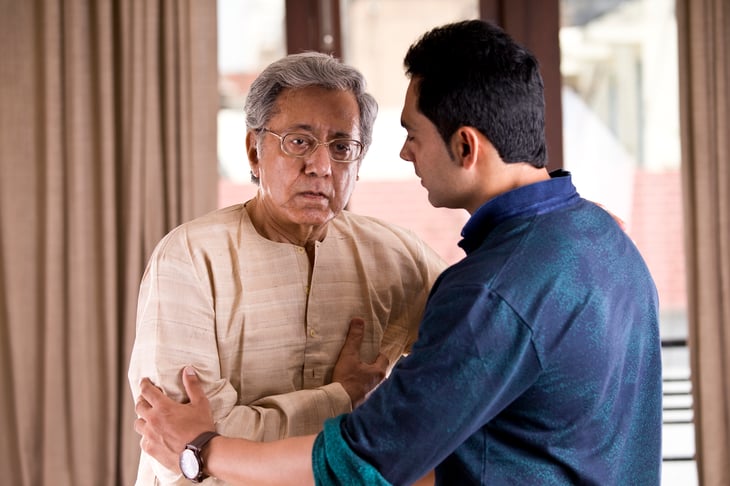
Think FAST: How to Tell if Someone You Know is Having a Stroke
Health & Aging | Caregiver Support
The phrase “Every minute counts” is a warning to heed if you suspect someone close to you is having a stroke. Getting immediate medical help is vital. So much so that researchers call the first hour after stroke symptoms appear the “golden hour.” If a person can get to the hospital during that first hour, their chances of survival and recovery are much greater. According to the American Stroke Association, strokes are the second leading cause of death globally.
Age plays a role in strokes, which means older adults are at increased risk. But it’s important to know that strokes can happen at any age and for a variety of reasons. Actor Luke Perry suffered a fatal stroke at the age of 52. Frankie Muniz, another popular actor, began experiencing mini-strokes at just 26. And movie star, Sharon Stone, suffered a massive stroke in her early forties that almost claimed her life—it took 7 years to fully recover.

Here are some other factors that can increase your risk for experiencing a stroke:
- High blood pressure
- High cholesterol
- Smoking
- Diabetes
- Being overweight
- Family history of strokes
Take a few minutes to learn the warning signs that can help you identify if someone around you is experiencing stroke symptoms. If you are familiar with these, you can take quick action.
Act FAST: Recognizing Stroke Warning Signs
F-A-S-T is an acronym created to teach people how to recognize and remember the most common indicators that someone might be having a stroke. Here is what each of the letters stands for:
- F for FACE: If one side of a person’s mouth appears to be drooping or their smile looks lopsided, know that this is a common red flag. Look at the person’s face straight on comparing one side with the other for differences. Also, ask them to smile so you can see if either side of their mouth droops.
- A for ARMS: People who are having a stroke usually have difficulty manipulating their extremities. Have the person try to raise both arms above their head. They may not be able to lift one or both arms if they are experiencing a stroke. If the person can lift their arms, watch to see if either one drifts downward. That’s a warning sign something isn’t right. The same is true for walking. Dragging one leg even slightly can be a symptom, too.
- S for SPEECH: Strokes interrupt the flow of blood to the brain often causing problems with speech. If a parent is having difficulty talking, slurring words, repeating the same words or phrases, or their conversation doesn’t make sense, it may be a stroke. It’s an issue that needs to be addressed by a physician immediately.
- T for TIME: Finally, remember that time is of the essence if someone is having a stroke. Don’t wait to see if symptoms disappear. Call 911 and tell the dispatcher you suspect a person near you is having a stroke. Health professionals usually advise people to utilize 911 instead of trying to take the person to the emergency room. Life-saving medications must be administered quickly to be effective, and going in by ambulance typically results in receiving faster care.

Other Stroke Symptoms to Know
While the FAST acronym addresses the most common stroke signs, there are other red flags to watch for:
- Sudden onset of a severe headache
- Difficulty taking steps and walking
- Numbness in the face, arm, or leg
- Vision problems, such as sudden loss of or blurry vision
Like the FAST signs above, these potential symptoms of a stroke also require prompt attention.
Subscribe to the PSL Blog
Want to have helpful articles like this delivered directly to your Inbox a few times a month? Use the form below to subscribe to the PSL blog. We cover topics ranging from healthy aging to caregiving, senior living, retirement planning, and more!
About Presbyterian Senior Living
As the trusted leader in aging services, Presbyterian Senior Living combines over 97 years of experience with innovative approaches to senior communities and services. Across our 27 communities in PA, MD, OH, and DE, we serve over 6,000 seniors. We are committed to: FOSTERING teamwork and responsibility. UPHOLDING integrity in every action. EMBRACING innovation to create opportunities for everyone’s success. LEADING with compassion and respect.


